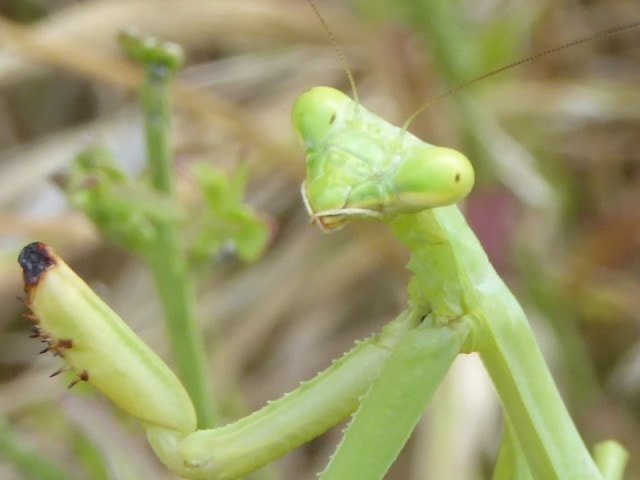Got Mosquitoes? This is kind of long, but I get so many questions about mosquitoes, I thought I would put this out as a public service.
No, the critters pictured above are actually your absolute best friends if you DON’T LIKE mosquitoes; damselflies. Smaller and more delicate than their cousins the dragonflies, both groups are by far the most effective mosquito predators there are.
If you use ANY kind of spray system in your yard, you will kill these guys and the mosquitoes will return even faster. And if you use one of those “bug zappers”, stop! They kill far more beneficial insects than mosquitoes. Birds and other wildlife are suffering severely from the loss of food, which for many consists of flying insects, mostly pollinators, and bug zappers are a big cause of this! Read on to find ways to control mosquitoes without using expensive pest services that kill or at least harm nearly every living animal in your yard, while creating an expensive addiction to their continued use.
Having a healthy pond with dragonflies and damselflies, maybe also mosquito fish, is the best way to prevent mosquitoes! But that may not be practical for most of us.
Most of our mosquitoes are breeding in stagnant water that we’re not even aware is present. Particularly in places like backed up French drains or the housings for utility boxes. But also under flower pots that are in water trays, where the air conditioner drips water out of your house, oh and did I say French drains? Especially in older houses, you may not even be aware of these in your yard!
There is a product called Mosquito Bits that contain BTI, a bacterial derivative that is targeted only to kill mosquito larvae. You can put it in birdbaths, water barrels, and of course all the other things I mentioned previously. Add a handful once a month and we can make a huge difference. I order it on Amazon.
Do mosquitoes carry disease? Yes. There was one HUMAN case of West Nile in Williamson County in 2022, and that’s the only recent one I’m aware of. The mosquitoes that carry malaria, for example, don’t even occur here.
Nevertheless, mosquitoes are a particular nuisance to people (apparently including me) who produce higher concentrations of carboxylic acids in their skin. Sorry – this is probably genetic, and there’s not much those of us (like me) who seem to be the first ones in the crowd to get attacked, can do about it, except wear repellents. I believe the most truly effective one is DEET. Yes, it melts plastic, but years and years of studies have never shown any deleterious effect on humans. Most of the herbal or “natural” stuff works for only short periods, if at all. (believe it or not, America Beautyberry is actually showing some promise as a repellent. Mosquitoes hate bright things, so wearing a white shirt helps!
Finally, if you’ve read this far, I’ll tell you about the system I have at my house. It doesn’t kill all the mosquitoes but it targets and traps them, literally by the hundreds and even thousands. It is called a biogents device. You put a packet in it containing simulated human scent and you run it all the time. It’s like a vacuum cleaner that only catches mosquitoes. I’ve gone an extra mile and attached a CO2 tank to it since carbon dioxide also attracts mosquitoes, and I can literally see thousands of desiccated mosquitoes each time I check the inside trap net. As you will see in the video below.



